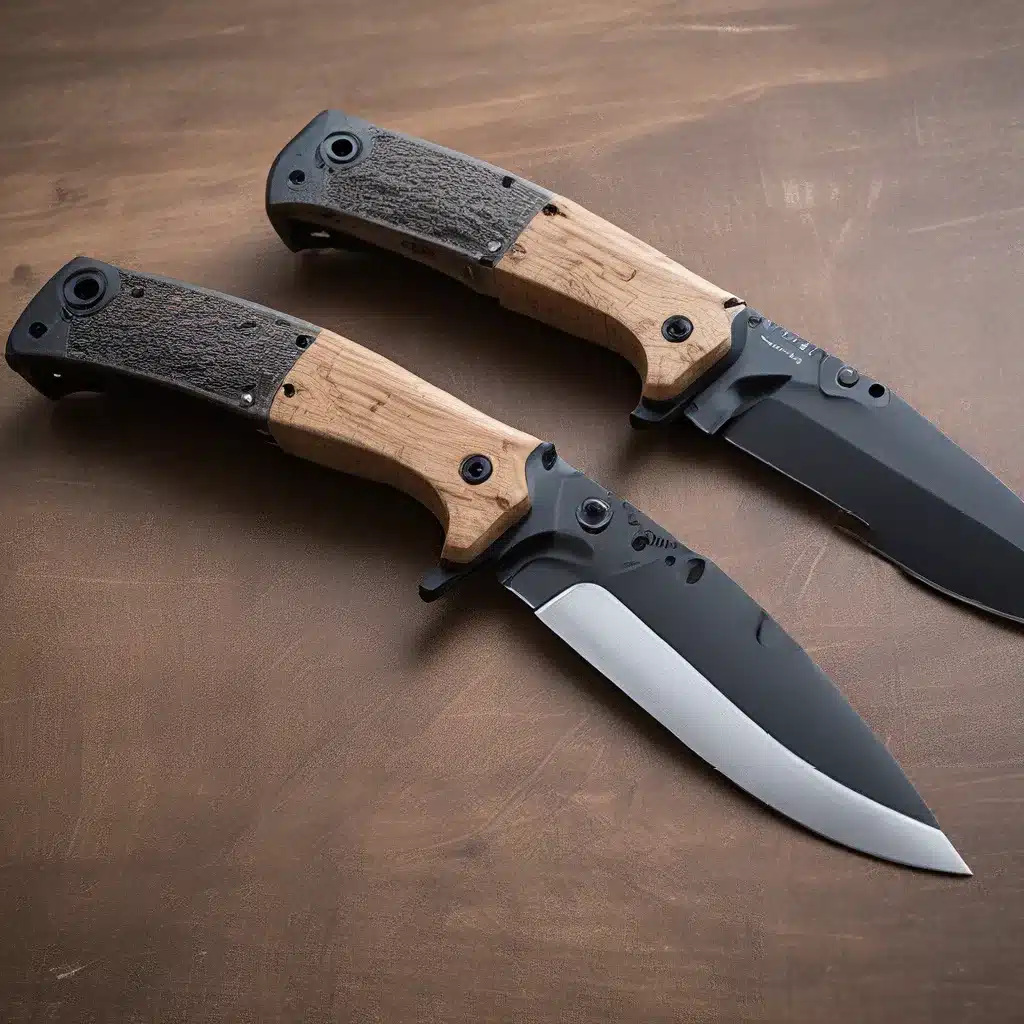
The Scandi Grind Controversy: Navigating the Legal Landscape
As an avid outdoorsman and knife enthusiast, I’ve always been fascinated by the intricate dance between innovative product design and the ever-evolving legal landscape. One such captivating controversy that has been simmering in the knife community is the great Scandi grind debate.
The Scandi grind, a distinct blade profile characterized by a flat, single-bevel edge, has long been a staple in the world of bushcraft and survival knives. This unique geometry not only offers exceptional cutting performance but also raises some intriguing legal questions. You see, in certain jurisdictions, the Scandi grind has found itself at the center of a heated discussion around knife legality.
Some experts believe that the Scandi grind’s razor-sharp edge and its potential for being used as a weapon have led to increased scrutiny from lawmakers and law enforcement. The concern is that these knives, despite their practical applications, may be perceived as inherently dangerous and potentially illegal.
However, as I’ve delved deeper into this issue, I’ve realized that the legality of the Scandi grind is far from a simple black-and-white matter. There are nuances, gray areas, and ongoing debates that deserve closer examination.
Exploring the Legality Landscape
One of the key factors that complicates the legality of the Scandi grind is the lack of consistent, universal definitions and regulations. Different regions, states, or even cities may have their own unique laws and interpretations when it comes to assessing the legality of a particular knife design.
For example, some jurisdictions may focus on the overall length of the blade, while others may be more concerned with the knife’s intended use or the nature of the edge geometry. This creates a patchwork of legal frameworks that can be challenging for both knife enthusiasts and manufacturers to navigate.
Interestingly, some experts argue that the Scandi grind may actually be less likely to be considered a ‘deadly weapon’ in certain legal contexts. The reasoning is that the flat, single-bevel edge is more akin to a utility tool than a traditional, double-edged blade that is often associated with weapons. This subtle distinction could potentially sway the legal interpretation in favor of the Scandi grind.
However, this is not a universal truth, and we must be mindful that legal interpretations can vary widely. What may be considered legal in one area could be deemed illegal in another, even when the knife design remains the same.
The Game Designer’s Perspective
As a game designer myself, I can’t help but draw parallels between the complexities of knife legality and the challenges we face in the world of game design. Much like the ever-evolving legal landscape, the gaming industry is also constantly grappling with shifting cultural norms, technological advancements, and regulatory changes.
In my experience, the key to navigating these treacherous waters often lies in cultivating a deep understanding of the CORE attributes: Curiosity, Obsession, Resilience, and Empathy. These fundamental traits not only serve game designers well but can also prove invaluable for anyone navigating the intricate web of legality and innovation.
Curiosity, for instance, drives us to continuously explore the nuances of the law, staying informed of the latest developments and seeking out diverse perspectives. Obsession fuels our dedication to understanding the complexities of knife design and its legal implications, diving deep into the subject matter.
Resilience, then, becomes essential as we face the inevitable setbacks and challenges that come with pushing the boundaries of what’s legally permissible. And finally, Empathy allows us to consider the needs and concerns of all stakeholders – from lawmakers and law enforcement to the end-users of these innovative knife designs.
The Path Forward: Responsible Innovation
As I ponder the future of this ongoing debate, I’m struck by the idea that responsible innovation may hold the key to reconciling the tension between cutting-edge knife designs and the legal landscape.
Perhaps the solution lies in a collaborative approach where knife manufacturers, designers, and lawmakers work together to establish clear, industry-wide guidelines. This could involve developing standardized definitions, testing protocols, and educational programs to ensure that innovative products align with legal frameworks without stifling creativity.
At Herman Knives, we’ve made it our mission to be at the forefront of this movement, championing responsible design and proactive engagement with regulatory bodies. By fostering open dialogues and finding common ground, we believe we can pave the way for a future where cutting-edge innovations and the law can coexist harmoniously.
Of course, the path ahead is not without its challenges. Ongoing research and evolving perspectives will likely continue to shape the legal landscape, and we must remain vigilant and adaptable. But I am hopeful that through a combination of curiosity, obsession, resilience, and empathy, we can navigate these turbulent waters and unlock the full potential of innovative knife designs.
Embracing the Future, Responsibly
As I reflect on the Scandi grind controversy and the broader legal complexities surrounding knives, I’m reminded of the powerful role that game design principles can play in shaping the future of this industry. By embracing the CORE attributes and fostering a culture of responsible innovation, we can unlock new possibilities while respecting the concerns and needs of all stakeholders.
The journey ahead may be filled with perplexity and burstiness, but I’m excited to see where it leads. Who knows what other cutting-edge knife designs are on the horizon, just waiting to push the boundaries of what’s legally possible? With the right mindset and collaborative approach, I believe we can navigate these uncertain waters and chart a course towards a future where innovative products and responsible stewardship go hand in hand.
So, let’s continue to explore, experiment, and elevate the world of knives – responsibly, of course. The possibilities are truly endless, and I can’t wait to see what the future holds.


